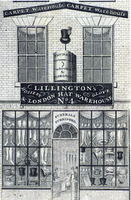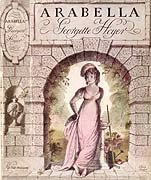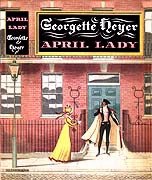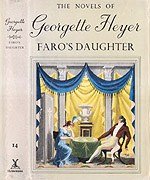
Okay, this is ridiculous. I came over here today and wondered if today’s post-er had put her post up. I always like reading what my fellow Riskies have to say, even if I forget to comment (note to self: Stop being so damn reticent).
And then I remembered TODAY’S POST-ER IS ME!
Oy.
I’ve had some personal drama lately, having to do with a friend, thank goodness, not me, so I’ve forgotten what day it is. I am waiting for my agent to send me notes on my Regency-set historical, but I’ve also been dreading seeing the email in my inbox, because that’ll mean I have to knuckle down and do the revisions. Ack. We had Halloween, and my mother-in-law was in town, which means I have a cleaner house, but a more stressed brain, and it’s gotten colder, then warmer, then colder–honestly, I’m surprised I actually remembered Friday was my day.
So let’s turn the tables and have YOU guys supply the meat of the post, if you don’t mind:
What are you reading now?
What’s the last book you decided not to finish (if you don’t want to name names, that’s fine.)
What periods other than the Regency do you indulge in?
Which author have you glommed recently?
Have you started thinking about Christmas yet, or are you just surprised it’s November already?
Will you take your son to see Flushed Away just because Hugh Jackman does the voice?
Thanks, and meanwhile, I’ll WAIT here for your answers. Happy Friday!

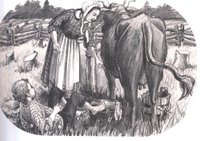

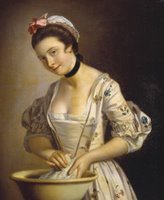
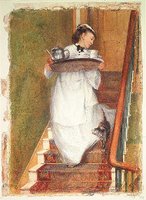 Or, you might go into service. Here’s another amazing statistic: in the eighteenth century, one-third of all the population (with the exception of the aristocracy) was in service at some time in their lives—usually until their mid-twenties. About one-third of London’s population were servants. Some people, working in the houses of the rich, rose in the ranks to enter the servant elite as butler, housekeeper, or lady’s maid; even though this illustration is from the mid-eighteenth century, you can see how well-dressed this lady’s maid is. Servants earned room and board, plus “perks”—for a ladies maid or valet, cast-off clothing they could wear or sell—or “vails,” tips from visitors usually given to footmen.
Or, you might go into service. Here’s another amazing statistic: in the eighteenth century, one-third of all the population (with the exception of the aristocracy) was in service at some time in their lives—usually until their mid-twenties. About one-third of London’s population were servants. Some people, working in the houses of the rich, rose in the ranks to enter the servant elite as butler, housekeeper, or lady’s maid; even though this illustration is from the mid-eighteenth century, you can see how well-dressed this lady’s maid is. Servants earned room and board, plus “perks”—for a ladies maid or valet, cast-off clothing they could wear or sell—or “vails,” tips from visitors usually given to footmen. 